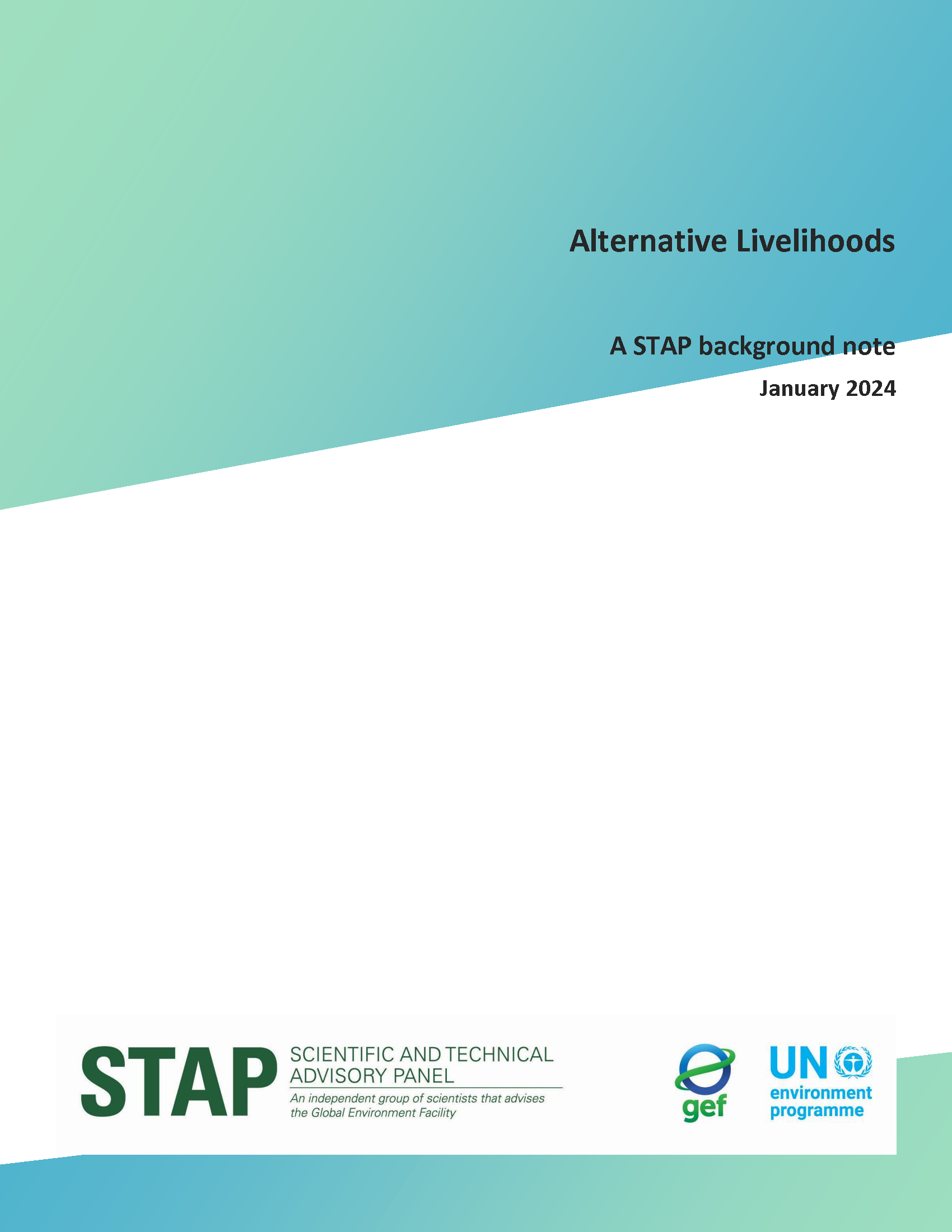AL approaches have been used in GEF projects mostly to reduce environmental harms associated with livelihood practices or, to a lesser extent, to encourage shifts to livelihoods that are more resilient to climate change. However, research literature suggests that permanent shifts are often difficult to achieve and evidence supporting the effectiveness of this approach is limited.
This note clarifies the various types of livelihood interventions to address inconsistent use and understanding of the term “alternative livelihoods” in GEF projects. Its content and findings are based on a targeted review of scientific and technical literature, as well as the findings from a sample of full-size projects selected from the GEF7 funding cycle. The analysis of academic and technical sources highlights the absence of evidence to verify the environmental benefits from AL approaches and emphasizes the need for more effective long-term monitoring and evaluation of the causal links between AL interventions and global environmental benefits (GEBs) in GEF projects. STAP’s review of the literature also highlights the persistent challenges associated with AL approaches, often arising from inadequate consideration of socio-economic and socio-cultural factors driving livelihood decisions, and clarifies the implied assumptions in the several steps it takes to get from the introduction of an AL to the achievement of GEBs.
The main target audience for this document are GEF Implementing Agencies and partners, who should aim to use the advice within it to improve the design of AL interventions across GEF projects, so they have a greater chance of achieving global environmental benefits.





